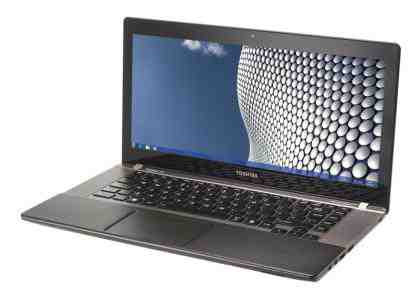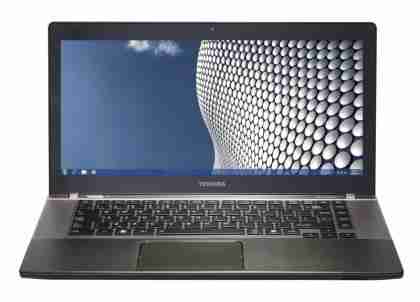Toshiba Satellite U840W review
Toshiba’s latest premium Ultrabook is the first we’ve seen with an ultra-widescreen 21:9 display ratio. That’s the shape of the cinema screens in your local multiplex, but don’t be put off, as the Satellite U840W is also suited to multi-tasking, with ample room for working on two documents simultaneously.

The 14.4in, 1,792x768 resolution display is guaranteed to turn heads, but it has an incredibly glossy finish that makes it difficult to see what’s on-screen under bright light, and the disappointingly average viewing angles don’t help matters. However, find a comfortable position and you’ll soon notice how high resolution everything looks – you’re only getting an additional 456 horizontal pixels compared to the average Ultrabook, but that makes a huge difference, especially when compacted into a 14in display. Colours look vibrant and brightness is reasonable, although we would have liked more contrast to really show off the detail in darker film scenes.

We were able to comfortably fit two word documents on-screen at once, so the U840W is certainly suited to multitasking. For films, it depends on the aspect ratio. A lot of films are shot at 21:9, with the traditional black bars pushed off the top and bottom of the screen, giving you a full-screen experience. For content shot at different aspect ratios, such as 16:9 1080p footage, you end up with black bars at the side of the picture in order to fit the full picture on screen.

The case has room for a multi-format memory card reader, three USB3 ports, an Ethernet port and two 3.5mm audio jacks. Toshiba has also made space for a pair of Harmon Kardon speakers, which produce surprisingly capable audio, although they still can’t compete with a decent pair of headphones or dedicated speakers. Build quality is something of a mixed bag. Initial impressions are positive, with a sturdy chassis built from a combination of brushed metal and rubberised plastic. The slightly bronze tint looks sleek and gives the laptop a unique look, but there are problems underneath the lid.
